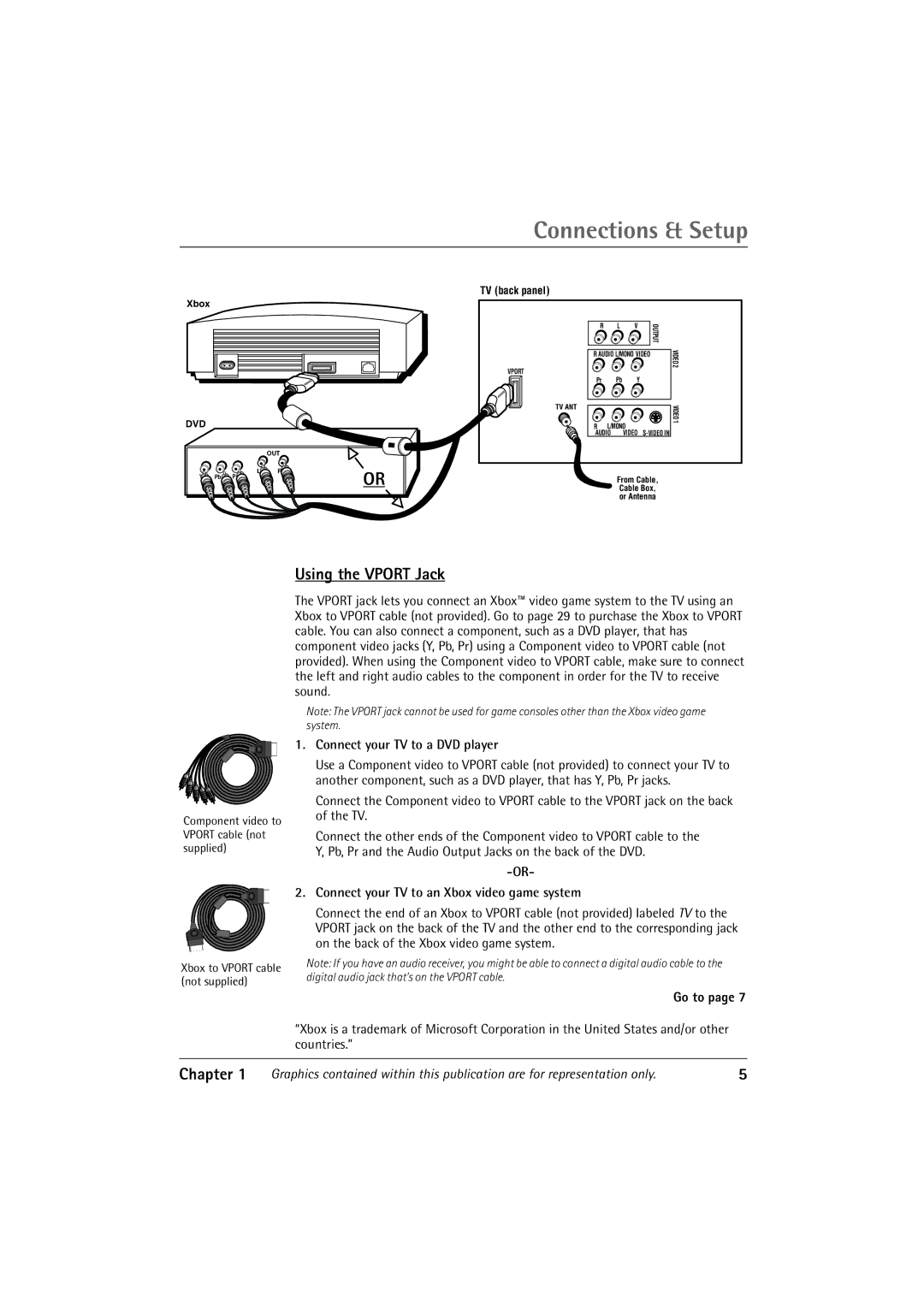
Connections & Setup
Xbox
TV (back panel)
DVD
VPORT
TV ANT
R |
| L | V | OUTPUT |
|
|
|
| |
R AUDIO L/MONO VIDEO | VIDEO2 | |||
| ||||
Pr |
| Pb | Y |
|
R | L/MONO | VIDEO 1 | ||
| ||||
AUDIO |
| VIDEO | ||
| OUT |
|
L | R | OR |
Y Pb Pr |
|
Using the VPORT Jack
From Cable,
Cable Box, or Antenna
Component video to VPORT cable (not supplied)
Xbox to VPORT cable (not supplied)
The VPORT jack lets you connect an Xboxª video game system to the TV using an Xbox to VPORT cable (not provided). Go to page 29 to purchase the Xbox to VPORT cable. You can also connect a component, such as a DVD player, that has component video jacks (Y, Pb, Pr) using a Component video to VPORT cable (not provided). When using the Component video to VPORT cable, make sure to connect the left and right audio cables to the component in order for the TV to receive sound.
Note: The VPORT jack cannot be used for game consoles other than the Xbox video game system.
1.Connect your TV to a DVD player
Use a Component video to VPORT cable (not provided) to connect your TV to another component, such as a DVD player, that has Y, Pb, Pr jacks.
Connect the Component video to VPORT cable to the VPORT jack on the back of the TV.
Connect the other ends of the Component video to VPORT cable to the Y, Pb, Pr and the Audio Output Jacks on the back of the DVD.
2. Connect your TV to an Xbox video game system
Connect the end of an Xbox to VPORT cable (not provided) labeled TV to the VPORT jack on the back of the TV and the other end to the corresponding jack on the back of the Xbox video game system.
Note: If you have an audio receiver, you might be able to connect a digital audio cable to the digital audio jack that’s on the VPORT cable.
Go to page 7
ÒXbox is a trademark of Microsoft Corporation in the United States and/or other countries.Ó
Chapter 1 | Graphics contained within this publication are for representation only. | 5 |
